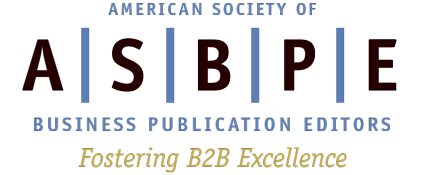
To say 2020 was “a year of change” is the biggest understatement of all time. It absolutely will be the year we look back on with wonder at how we managed to keep our heads above water as the seas of change swirled around us. The big three waves of course were health changes (the COVID-19 pandemic), social changes (the murder of George Floyd that effectively brought the Black Lives Matter and related movements to the mainstream) and political changes (wait, there was a presidential election last year too?).
In general, I’ve always found that journalists tend to respond to change with a little more even keel, since many of us are used to working in newsrooms where news breaks all the time and if we stop to clutch our pearls or lament too hard, we’ll miss the scoop. We’re also pretty accustomed to approaching news with a bit of detachment.
As the COVID-19 news broke, I naively thought we’d approach that with our customary professional detachment. But I learned several months in that finding that even keel and staying professionally detached was tough for me. I manage a newsroom of seven reporters and editors, and we write about the global travel business industry – specifically, the business of hotels, which includes real estate transactions, hotel operations and larger travel trends. We publish daily and all have newspaper backgrounds, so we’re very accustomed to “localizing” national and international news to our industry.
But to have those waves of change breaking as we all were transitioning from working together in a newsroom to working from home made it tough to achieve that even keel. Add in the fact that we also were going through a corporate acquisition at the time and were transitioning all our operating and content-management systems, and you can see why I spent the summer and fall popping Tums like it was candy.
I realized that what made this period of change fundamentally so different is that the changes 2020 brought were so much more personal for me and my team than any other major business disruption during our careers had been. Any tools we had for remaining professionally detached went out the window once physical health, mental health and safety were at stake for us and our loved ones.
What helped me turn the corner when it came to managing change in 2020 was realizing that professional detachment isn’t 100% realistic at all times. I needed to show my team that it was okay to be scared and worried, and that by giving space and acknowledgement to the crazy swirling around us was the only way we’d be able also to make space for our work.
I’m lucky in that my team values healthy discourse. We love to debate and pick apart how the world is functioning (or not functioning) around us, and we’ve also all worked together for several years now, so we feel comfortable with each other to raise varying viewpoints. By creating that space in our daily virtual meetings to complain about politics, or to share interesting articles or personal stories, we helped each other deal with the crazy.
And it opened up opportunities for us and our reporting. We talked frankly and honestly together in June about ways we as a travel-industry trade publication could address the race-based disparities in our industry, and people on my team stepped up with ideas on how we could shed light, share resources and be accountable in real and authentic ways. That conversation now is an organic undercurrent of our reporting, and we’re regularly sharing ideas for getting better at showing representation in our stories, sources and topics.
Part of this leadership pivot for me too was being able to share with my team that I don’t always have all the answers, and I get frustrated and burned out too. Now we regularly share articles about stress management and coping mechanisms. And we talk about food a lot. That always helps!
In times of change, we often talk about balance – balancing work and life, balancing detached news reporting and full-blown frustration meltdowns. But a good friend of mine always says that instead of a balance, we should see these things as a symphony. Two sides will never naturally be in a state of perfect balance, and when we expect them to be, we’ll get frustrated and let down. Instead, if we see those elements ebbing and flowing, knowing that at different times, different elements will get more attention while the other elements provide support in the background, then we have a much better chance at putting our best foot forward.
For more on managing change, sign up today to take part in ASBPE’s “Charting B2B’s Path Forward” national conference, taking place online throughout the month of May. Join the Leadership Series tract for targeted speakers and discussion around tips for managing change as a leader in B2B.
